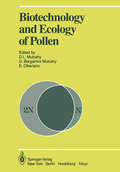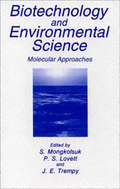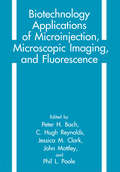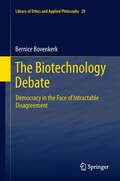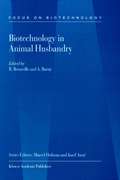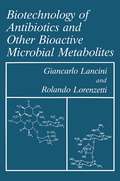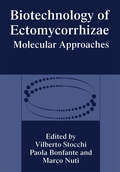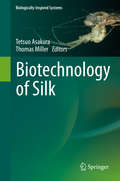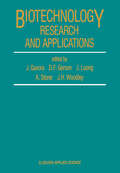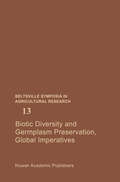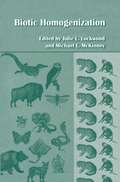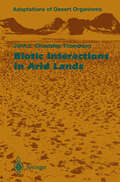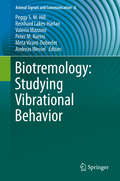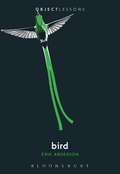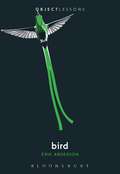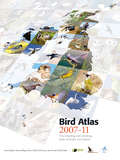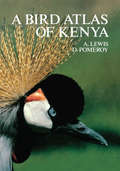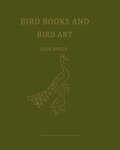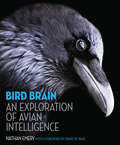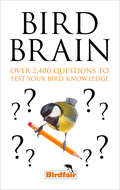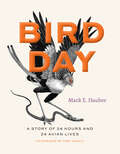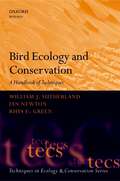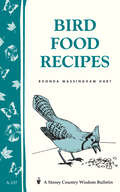- Table View
- List View
Biotechnology and Ecology of Pollen: Proceedings of the International Conference on the Biotechnology and Ecology of Pollen, 9–11 July, 1985, University of Massachusetts, Amherst, MA, USA
by David L. Mulcahy Gabriella Bergamini Mulcahy Ercole OttavianoIn Recognition of the Forgotten Generation D. L. MULCAHyl Pollen was long believed to serve primarily a single function, that of delivering male gametes to the egge A secondary and generally overlooked value of pollen is that it serves to block the transmission of many defective alleles and gene combinations into the next generation. This latter function comes about simply because pollen tubes carrying defective haploid genotypes frequently fail to complete growth through the entire length of the style. However, the beneficial consequences of this pollen selection are diluted by the fact that the same deleterious genotypes are often transmitted through the egg at strictly mendelian frequencies (Khush, 1973). Gene expression in the pollen might thus at least appear to be a phenomenon of trivial consequence. Indeed, Heslop-Harrison (1979) rightly termed the gametophytic portion of the angiosperm life cycle, the "forgotten generation." This neglect, however, came about despite subtle but constant indications that pollen is the site of intense gene activity and selection. For example, Mok and Peloquin (1975) demonstrated that relatively heterozygous diploid pollen shows heterotic characteristics whereas relatively homozygous diploid pOllen does not. This was proof positive that genes are expressed (that is, transcribed and translated) in the pollen. 1 Department of Botany, University of Massachusetts Amherst, MA 01003, USA viii However, the implications for pollen biology of even this recent and well known study were not widely recognized.
Biotechnology and Environmental Science: Molecular Approaches
by S Mongkolsuk P. S. Lovett J. E. TrempyBiotechnology Applications of Microinjection, Microscopic Imaging, and Fluorescence
by Peter H. Bach C. H. Reynolds J. M. Clark J. Mottley P. L. PooleIndividual cells behave in surpnsmg ways that cannot be deduced from the averaged results of an organ as assessed by the use of conventional biochemical methods. Thus multicellular plant and animals systems are being investigated by an increasing array of histochemical and cytochemical techniques based on general chemical or specific immunological interactions to identify structural materials and to assess biological activities. In recent years there has been an increasing range of fluorescent probes, along with advanced computerised imaging and analysis techniques, which allows the behaviour of individual living cells to be followed in considerable detail. The parallel use of microinjection, microelectrodes and patch-clamping provides additional information about cells and their responses. Recombinant DNA technology has highlighted the desirability and the power of microinjecting defined materials into specific cells and so manipulating their fundamental biochemistry. New hypotheses are being tested which will form the cornerstone of future developments across the whole spectrum of biotechnology. The First European Workshop on Biotechnology Applications of Microinjection, Microscopic Imaging and Fluorescence was run at the University of East London, U.K, 21st-24th April, 1992 with the objective of bringing together a diverse group of individuals who were using these state-of-the-art applications for biotechnological exploration. A novel feature of the meeting was paiticipation by instrument manufacturers in the programme: there were hands-on workshops (where living cells could be examined), combined with the poster sessions.
The Biotechnology Debate: Democracy in the Face of Intractable Disagreement (Library of Ethics and Applied Philosophy #29)
by Bernice BovenkerkThis book grounds deliberative democratic theory in a more refined understanding of deliberative practice, in particular when dealing with intractable moral disagreement regarding novel technologies. While there is an ongoing, vibrant debate about the theoretical merits of deliberative democracy on the one hand, and more recently, empirical studies of specific deliberative exercises have been carried out, these two discussions fail to speak to one another. Debates about animal and plant biotechnology are examined as a paradigmatic case for intractable disagreement in today’s pluralistic societies. This examination reveals that the disagreements in this debate are multi-faceted and multi-dimensional and can often be traced to fundamental disagreements about values or worldviews. “One of the acute insights to emerge from this examination is that deliberation can serve different purposes vis-à-vis different types of problem. In the case of deeply unstructured problems, like the modern biotechnology debate, the aim of inclusion is more appropriate than the aim of consensus. This book highlights the importance of political culture and broader institutional settings in shaping the capacity and propensity of citizens to engage in deliberation and the degree to which governments are prepared to relinquish authority to deliberative mini-publics."Robyn Eckersley, University of Melbourne, Australia
Biotechnology in Animal Husbandry (Focus on Biotechnology #5)
by R. Renaville A. BurnyAnimal biotechnology is a broad umbrella encompassing the polarities of fundamental and applied research including molecular modelling, molecular and quantitative genetics, gene manipulation, development of diagnostics and vaccines and manipulation of tissue or digestion metabolism by growth promoters. Although animal biotechnology in the broadest sense is not new, what is new is the level of complexity and precision involved in scientists' current ability to manipulate living organisms. This new book sets out to show that the important ideas in animal biotechnology are exciting and relevant to everyday experience. It represents an important update of the literature for research workers, lecturers, and advisers in animal science, but is also a core text for advanced undergraduate courses in animal science and biotechnology. It will be an essential acquisition for librarians in agriculture and veterinary science.
Biotechnology of Antibiotics and Other Bioactive Microbial Metabolites
by G. Lancini R. LorenzettiIn response to the field's need for an introductory text, the authors have distilled the vast and scattered literature relating to the biotechnology of microbial secondary metabolites. General biology, biosynthesis, the search for novel metabolites, and techniques for strain improvement are all discussed to provide undergraduate and graduate students with a concise, readable overview of the field.
Biotechnology of Ectomycorrhizae: Molecular Approaches
by P. Bonfante M. Nuti V. StocchiForty years after the discovery of the helix nature of DNA and more than twenty after the first applications of recombinant DNA technology to the pharmaceutical industry, the Pandora's vase of biotechnology seems far from being empty. New products for agriculture and the food industry are constantly being placed on the market, and powerful monitoring techniques have been developed to track non-modified and genetically modified vaccines, viruses, microbes and plants released into the environment. Molecular approaches for taxonomic purposes, which might also be useful for quality control and assurance, have been successfully developed and used for taxonomic purposes in the last decade for both prokaryotic and eukaryotic cells, including yeasts and filamentous fungi. Mycorrhizae are one example of a traditional biotechnology that can greatly benefit from the latest molecular approaches. These universal symbioses between soil fungi and plant roots playa central role in most of the natural and agricultural ecosystems in such key processes as nutrient cycling, soil structural conservation and plant health. For these reasons, mycorrhizae have been successfully used to improve the quality of forest and agricultural seedlings, to produce high-quality micropropagated plants and to increase the production of edible mushrooms of high economic value, such as truffles. However, although controlled inoculation of oak and hazel seedlings with ectomycorrhizal truffles has been carried out for decades in France and Italy, and is still expanding commercially, several technological gaps remain to be filled.
Biotechnology of Silk (Biologically-Inspired Systems #5)
by Tetsuo Asakura Thomas MillerThis book is a snapshot of the current state of the art of research and development on the properties and characteristics of silk and their use in medicine and industry. The field encompasses backyard silk production from ancient time to industrial methods in the modern era and includes an example of efforts to maintain silk production on Madagascar. Once revered as worth its weight in gold, silk has captured the imagination from its mythical origins onwards. The latest methods in molecular biology have opened new descriptions of the underlying properties of silk. Advances in technological innovation have created silk production by microbes as the latest breakthrough in the saga of silk research and development. The application of silk to biomaterials is now very active on the basis of excellent properties of silks including recombinant silks for biomaterials and the accumulated structural information.
Biotechnology Research and Applications
by J. Gavora D. F. Gerson J. Luong A. Storer J. H. WoodleyHistorically, ruminant animals have provided farmers with the ability to utilize marginal lands for the production of high quality food for human consumption. Ruminants are able to derive their nourishment from feeds that are not in themselves capable of meeting the nutritional needs of the animal. They do this by supporting in the rumen, which is a greatly enlarged region of the stomach which precedes the animals digestive system, a microbial fermentation system. This system partially degrades complex polysaccharides and provides to the animal not only the degradation products (chiefly volatile fatty acids), but also secondary microbial metabolites and microbial biomass (most importantly microbial protein, which can be synthetized from inorganic nitrogen sources). A ruminant animal is able to survive, if not thrive, on a diet containing only cellulose, a non-protein nitrogen source such as urea, and trace minerals. The capacity of the rumen to process low quality feeds is limited by factors such as rumen volume, the time required for digestion of these feeds in the rumen, and the ability of the animal to chew the feed. Hodern ruminant animals have been intensively selected for high production potential, but the limited capacity of the rumen fermentation means that this potential cannot be realized by feeding the animal low quality feeds. The high production potential of these animals can only be realized by feeding large amounts of readily digestible, high quality feeds such as oilseed meals and grains.
Biotic Diversity and Germplasm Preservation, Global Imperatives (Beltsville Symposia in Agricultural Research #13)
by Lloyd Knutson Allan K. StonerTopics for the Beltsville Symposia are selected to highlight specific areas of research and science policy that are of concern to scientists in the Beltsville Area as well as to the general scientific community. Each sympo sium in the series is structured to provide a realistic appraisal of current findings, research progress, and relevant policy issues within the constraints established by the organizing committee. Thus, the presentations and dis cussions that have marked these symposia have had a strong appeal to the broad community of scientists. Knowledge of the diversity of living organisms is still quite limited. Since the time of Linnaeus, about 1.7 million species have been described. The actual number has been estimated between 5-50 million. Many species, land races, and strains are vanishing. Clearly, the world's scientific institutions are inadequately equipped to attain sufficient knowledge of a significant fraction of the diverse living forms. Also, efforts in the collection and preservation of germplasm of plants and animals urgently need to be strengthened. These mattes are critically important to future generations. This symposium addresses vital concerns of biotic diversity and germ plasm preservation from diverse perspectives. Many of the parts provide concrete recommendations for action, and they call attention to areas of research that must be pursued with intensity.
Biotic Homogenization
by Michael L. McKinney Julie L. LockwoodBiological homogenization is the dominant process shaping the future global biosphere. As global transportation becomes faster and more frequent, it is inevitable that biotic intermixing will increase. Unique local biotas will become extinct only to be replaced by already widespread biotas that can tolerate human activities. This process is affecting all aspects of our world: language, economies, and ecosystems alike. The ultimate outcome is the loss of uniqueness and the growth of uniformity. In this way, fast food restaurants exist in Moscow and Java Sparrows breed on Hawaii. Biological homogenization qualifies as a global environmental catastrophe. The Earth has never witnessed such a broad and complete reorganization of species distributions.
Biotic Interactions in Arid Lands (Adaptations of Desert Organisms)
by John L. Cloudsley-ThompsonThe exigencies of life in the desert environment have resulted in the se lection of a diversity of adaptations, both morphological and physiologi cal, in the flora and fauna. At the same time, many plants and most small animals are able not merely to exist but even to thrive under desert conditions - mainly by avoiding thermal extremes and by the refine ment of pre-existing abilities to economise in water. In the same way, the biotic interactions of the flora and fauna of the desert do not involve many new principles. Nevertheless, conditions in arid regions frequently do invoke refinements of the complex interrelations between predators and their prey, parasites and their hosts, as well as between herbivores and the plants upon which they feed. In this book, I shall discuss not only such interactions and their feedback effects, but also community processes and population dynamics in the desert. The physical conditions of the desert that principally affect predators and their prey are its openness and the paucity of cover. This is re stricted to scattered plants, occasional rocks, holes, and crevices in the ground. Furthermore, nightfall does not confer relative invisibility, as it does in many other ecobiomes, because of the clarity of the atmosphere. The bright starlight of the desert renders nearby objects visible even to the human eye, while an incandescent moon bathes the empty landscape with a flood of silver light. Consequently, adaptive coloration is func tional at all hours of the day and night.
Biotremology: Studying Vibrational Behavior (Animal Signals and Communication #6)
by Andreas Wessel Peggy S. M. Hill Reinhard Lakes-Harlan Valerio Mazzoni Peter M. Narins Meta Virant-DoberletThis volume is a self-contained companion piece to Studying Vibrational Communication, published in 2014 within the same series. The field has expanded considerably since then, and has even acquired a name of its own: biotremology. In this context, the book reports on new concepts in this fascinating discipline, and features chapters on state-of-the art methods for studying behavior tied to substrate-borne vibrations, as well as an entire section on applied biotremology. Also included are a historical contribution by pioneers in the field and several chapters reviewing the advances that have been made regarding specific animal taxa. Other new topics covered are vibrational communication in vertebrates, multimodal communication, and biotremology in the classroom, as well as in art and music. Given its scope, the book will appeal to all those interested in communication and vibrational behavior, but also to those seeking to learn about an ancient mode of communication.
Bird (Object Lessons)
by Erik AndersonObject Lessons is a series of short, beautifully designed books about the hidden lives of ordinary things. Hope, as Emily Dickinson famously wrote, is the thing with feathers. Erik Anderson, on the other hand, regards our obsession with birds as too sentimental, too precious. Birds don't express hope. They express themselves. But this tension between the versions of nature that lodge in our minds and the realities that surround us is the central theme of Bird. This is no field guide. It's something far more unusual and idiosyncratic, balancing science with story, anatomy with metaphor, habitat with history. Anderson illuminates the dark underbelly of our bird fetish and offers a fresh, alternative vision of one of nature's most beloved objects.Object Lessons is published in partnership with an essay series in the The Atlantic.
Bird (Object Lessons)
by Erik AndersonObject Lessons is a series of short, beautifully designed books about the hidden lives of ordinary things. Hope, as Emily Dickinson famously wrote, is the thing with feathers. Erik Anderson, on the other hand, regards our obsession with birds as too sentimental, too precious. Birds don't express hope. They express themselves. But this tension between the versions of nature that lodge in our minds and the realities that surround us is the central theme of Bird. This is no field guide. It's something far more unusual and idiosyncratic, balancing science with story, anatomy with metaphor, habitat with history. Anderson illuminates the dark underbelly of our bird fetish and offers a fresh, alternative vision of one of nature's most beloved objects.Object Lessons is published in partnership with an essay series in the The Atlantic.
Bird Atlas 2007-11: The Breeding And Wintering Birds Of Britain And Ireland
by Dawn Balmer Simon Gillings Brian Caffrey Bob Swann Iain Downie Rob FullerRecommended for viewing on a colour tablet. The Bird Atlas 2007–2011 is the definitive statement on breeding and winter bird distributions in Britain and Ireland.
A Bird Atlas of Kenya
by Adrian LewisKenya, a country only the size of Texas, has one of the richest avifaunas in Africa. This atlas is an explanatory overview of Kenya's 1065 species, essential both to the birdwatcher as a means of finding birds and interpreting the significance of field observations, and to the ornithologist as a standard reference work.
A Bird Atlas of Kenya
by Adrian LewisKenya, a country only the size of Texas, has one of the richest avifaunas in Africa. This atlas is an explanatory overview of Kenya's 1065 species, essential both to the birdwatcher as a means of finding birds and interpreting the significance of field observations, and to the ornithologist as a standard reference work.
Bird Books and Bird Art: An Outline of the Literary History and Iconography of Descriptive Ornithology
by J. AnkerBird Brain: An Exploration of Avian Intelligence
by Nathan Emery Frans De WaalBirds have not been known for their high IQs, which is why a person of questionable intelligence is sometimes called a "birdbrain." Yet in the past two decades, the study of avian intelligence has witnessed dramatic advances. From a time when birds were seen as simple instinct machines responding only to stimuli in their external worlds, we now know that some birds have complex internal worlds as well. This beautifully illustrated book provides an engaging exploration of the avian mind, revealing how science is exploding one of the most widespread myths about our feathered friends—and changing the way we think about intelligence in other animals as well.Bird Brain looks at the structures and functions of the avian brain, and describes the extraordinary behaviors that different types of avian intelligence give rise to. It offers insights into crows, jays, magpies, and other corvids—the “masterminds” of the avian world—as well as parrots and some less-studied species from around the world. This lively and accessible book shows how birds have sophisticated brains with abilities previously thought to be uniquely human, such as mental time travel, self-recognition, empathy, problem solving, imagination, and insight.Written by a leading expert and featuring a foreword by Frans de Waal, renowned for his work on animal intelligence, Bird Brain shines critical new light on the mental lives of birds.
Bird Brain: Over 2,400 Questions To Test Your Bird Knowledge
by William CollinsAn ornithological quiz book packed with challenging questions for birders, based on the popular ‘Bird Brain of Britain’ contest at the annual BirdFair.
Bird Day: A Story of 24 Hours and 24 Avian Lives (Earth Day)
by Mark E. HauberAn hourly guide that follows twenty-four birds as they find food, mates, and safety from predators. From morning to night and from the Antarctic to the equator, birds have busy days. In this short book, ornithologist Mark E. Hauber shows readers exactly how birds spend their time. Each chapter covers a single bird during a single hour, highlighting twenty-four different bird species from around the globe, from the tropics through the temperate zones to the polar regions. We encounter owls and nightjars hunting at night and kiwis and petrels finding their way in the dark. As the sun rises, we witness the beautiful songs of the “dawn chorus.” At eleven o’clock in the morning, we float alongside a common pochard, a duck resting with one eye open to avoid predators. At eight that evening, we spot a hawk swallowing bats whole, gorging on up to fifteen in rapid succession before retreating into the darkness. For each chapter, award-winning artist Tony Angell has depicted these scenes with his signature pen and ink illustrations, which grow increasingly light and then dark as our bird day passes. Working closely together to narrate and illustrate these unique moments in time, Hauber and Angell have created an engaging read that is a perfect way to spend an hour or two—and a true gift for readers, amateur scientists, and birdwatchers.
Bird Day: A Story of 24 Hours and 24 Avian Lives (Earth Day)
by Mark E. HauberAn hourly guide that follows twenty-four birds as they find food, mates, and safety from predators. From morning to night and from the Antarctic to the equator, birds have busy days. In this short book, ornithologist Mark E. Hauber shows readers exactly how birds spend their time. Each chapter covers a single bird during a single hour, highlighting twenty-four different bird species from around the globe, from the tropics through the temperate zones to the polar regions. We encounter owls and nightjars hunting at night and kiwis and petrels finding their way in the dark. As the sun rises, we witness the beautiful songs of the “dawn chorus.” At eleven o’clock in the morning, we float alongside a common pochard, a duck resting with one eye open to avoid predators. At eight that evening, we spot a hawk swallowing bats whole, gorging on up to fifteen in rapid succession before retreating into the darkness. For each chapter, award-winning artist Tony Angell has depicted these scenes with his signature pen and ink illustrations, which grow increasingly light and then dark as our bird day passes. Working closely together to narrate and illustrate these unique moments in time, Hauber and Angell have created an engaging read that is a perfect way to spend an hour or two—and a true gift for readers, amateur scientists, and birdwatchers.
Bird Ecology and Conservation: A Handbook of Techniques (Techniques in Ecology & Conservation #1)
by William J. Sutherland Ian Newton Rhys GreenThe aim of this book is to outline the main methods and techniques available to ornithologists. A general shortage of information about available techniques is greatly hindering progress in avian ecology and conservation. Currently this sort of information is disparate and difficult to locate with much of it widely dispersed in books, journals and grey literature. Sutherland and his editorial team bring together in a single authoritative source all the ornithological techniques the avian community will ever need. For use by graduate students, researchers and practising conservationists worldwide. Bird Ecology and Conservation is the first title in a new series of practical handbooks which include titles focusing on specific taxonomic groups as well as those describing broader themes and subjects. The series editor is William J Sutherland.
Bird Food Recipes: Storey Country Wisdom Bulletin A-137 (Storey Country Wisdom Bulletin)
by Rhonda Massingham HartSince 1973, Storey's Country Wisdom Bulletins have offered practical, hands-on instructions designed to help readers master dozens of country living skills quickly and easily. There are now more than 170 titles in this series, and their remarkable popularity reflects the common desire of country and city dwellers alike to cultivate personal independence in everyday life.
